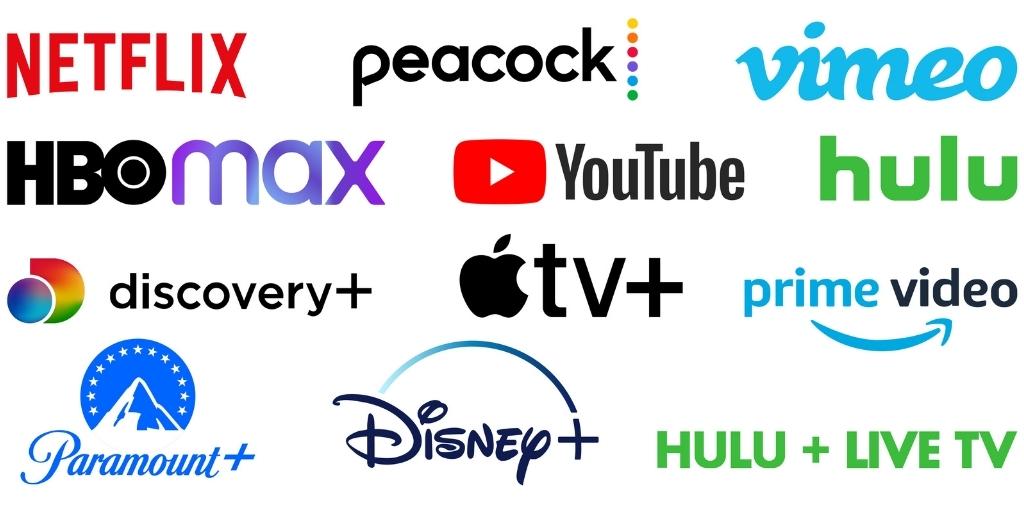Archives for May 2017
Marketing Trends Series: The Growing Popularity of Live Streaming Video

Table of Contents
Last year was a big year for live streaming video technology. Facebook launched its brand new Facebook Live feature, and new technologies like VR live streaming and 360-degree video streaming were created. Meanwhile, records were consistently set for the number of people viewing live streams.
Who uses streaming live video and for what purpose? Experian now uses live video feed to help customers with credit. DigitalMarketer uses it to meet with its partners from within a private Facebook group. Nissan used it to launch a new vehicle. General Electric used drones and Periscope while Taco Bell did a mock press conference. Curt Landry Ministries, in rural northeast Oklahoma, allows believers (7,500 of them) to stream live with the ministry twice a week from around the globe!
Live streaming video has continued to be a major force in the world of digital marketing.
Here are some of the trends we have already seen this year, as well as those that we expect to continue to develop and be influential as we continue to progress with this marketing tactic:
Increased use of live streaming on the user end
As hard as it may be to believe, some experts expect bandwidth devoted specifically to video traffic will make up 74 percent of internet use this year. This focus on video means big things for live streaming.
Young people are especially drawn to video applications and streaming. Snapchat is one of the most popular apps among Millennials and younger users—its users watch more than 10 billion videos each day. Facebook accounts for about eight billion views from an average of 500 million viewers every day. There is also the increasing popularity and power of Twitch, a live streaming service often used by gamers.
Finally, studies indicate more people than ever are consuming content on two screens at once — this means watching or reading content on a phone while also watching TV or looking at a computer screen. This provides companies with more opportunities to reach users, and live streams are among the best ways to do this.

More television companies launching streaming services
We have already seen the boom in services like Netflix, Hulu, and Amazon Prime. What is more interesting is the number of companies that are making their broadcast content available for live streaming, or streaming after the fact. NBC, for example, has been toying with live streaming for many of its sports broadcasts, including Sunday Night Football and the Olympics. ESPN has a streaming application that allows viewers to tune in from any device with an internet connection. CBS is launching a streaming application of its own. C-SPAN has a number of different live streams for political events.
In some cases, these companies are working with existing internet giants to get the most out of their live streaming capabilities. Twitter, for example, worked with the NFL and NBC, Fox, and CBS to experiment with live streaming several NFL games this year, and reached more than 20 million viewers as a result.
The complete replacement of Flash with HTML5
Looking more at the nuts and bolts of live streaming, this is the year in which Flash essentially becomes extinct. Flash was the primary tool for online video for the internet’s first couple of decades but has since been replaced by the faster, better, more powerful HTML5. Additionally, HTML5 has the benefit of being a much more secure technology.
The death bell tolled for Flash as soon as Chrome began dropping support for Flash. Other browsers and CDNs are beginning to do the same.
Live streaming as a source of breaking news
Visit the Facebook or Twitter pages for The New York Times, The Washington Post, CNN, Fox News, MSNBC, or any other major news provider, and you’ll almost instantly run across a live stream of some sort.
More than ever before, live video and social media have made news break almost as soon as it happens, and live video allows users to actually see it themselves and get instant commentary about what is happening.
News companies will continue to make major use of live video as a means of engaging and informing their audiences.
These are just a few of the biggest trends we are seeing with live streaming video in 2017. What is important to note is that we are still in the early stages of live video on the web — there is a whole lot more evolution to happen, which is an exciting prospect.
What are the benefits of streaming live video?
Streaming live video allows you to connect with your audience in real-time. It is not just about being live either. It is about allowing you to engage with those streams, so your audience now able to be a part of the conversation with you – live. Share your face, your voice, your expressions, and answer questions live! This builds trust and creates an environment of transparency. This is no longer an option for marketers and is a vital part of any content strategy.
When you integrate streaming live video into your sales and marketing process your customer gets what they want. A transparent, frictionless, self-serving experience on their time and more importantly on their terms.
Marketing Trends Series: The Evolution of Personalized Content Continues

Table of Contents
As we continue our marketing trends series, we look at a big trend that has actually been a key element of marketing campaigns for years: personalization.
Marketers who are able to personalize their campaigns to individuals (or at least to narrow segments of buyers) are better able to connect with their targets and form relationships with them. The ways in which marketers aim to personalize their messages, though, have changed drastically over the years as digital marketing has come to the forefront as the major marketing channel of choice for most companies.
In today’s world, companies are performing a significant amount of market research to develop what are called “buyer personas,” a profile of an ideal customer who meets a certain set of demographics, characteristics, motivations, preferences, and interests. Buyer persona information makes it easier for companies to segment their audiences and create marketing campaigns that speak more directly to the needs and wants of consumers on a much more detailed, individual level.
Let's consider some key statistics first that reinforce the need for personalized content and dynamic user experiences.
- “94% of companies agree that personalization is critical to current and future success.” ~ The Realities of Online Personalization, by Econsultancy
- 74% of online consumers get frustrated with websites when content (e.g., offers, ads, promotions, etc.) appears that has nothing to do with their interests. ~ Source: Why Companies Need to Market – and Not Just Sell – to Existing Customers, by Gartner
- 78% of consumers insist on personalized marketing. ~ Relate Magazine

Methods to better personalize marketing messages:
Here are a few examples of some of the specific methods being used to better personalize marketing messages by today’s digital marketers:
Customized landing pages
Today’s marketers are focused on customized landing pages for each inbound marketing campaign and traffic source that make sense in the context of each visitor’s unique motivations. So, for example, a page that appears when a user clicks on a display ad geared toward generating awareness should not be targeted to returning customers, but to people who might not have ever purchased from that company before.
Look alike segmentation
We have discussed many times the art of segmentation and the avatar. Personalization of content using that segmentation data takes your marketing to another level by segmenting on purchase behavior, time zone, and demographic/psychographic data. Looking beyond the basics to discover what your most valuable customers have in common, you’ll get an idea of how you can personalize content and special offers.
Nurturing email messages
Numerous tools make it easier than ever before for digital marketers to track the movements of prospects on their website. Based on these movements, marketers can send out lead-nurturing emails, such as a “We miss you!” message for a customer that has not visited or purchased anything for a while, or advertisements and deals for specific products and product categories based on a customer’s browsing habits.
Recommendations based on past purchases
Another big trend you will see across all markets in 2017 is companies with e-commerce platforms using customers' past purchase information to make recommendations or provide special deals for other products they might be interested in. If, for example, a person were to purchase a new charcoal grill, you might send an email offering a discount on grilling utensils and grill covers.
Personal surveys
Quick surveys are an outstanding way to get information from customers, and companies now often offer incentives (such as discount codes or free samples) for people who complete them. The survey questions you send can be based on the user’s browsing or purchase habits.
Location information
With so many people using mobile devices to browse the web and shop for products, marketers have access to a tremendous amount of location-based information that they never would have had before the smartphone era. Companies can send personalized messages for store-specific deals happening at the store closest to them. They can even send out messages to customers while in their stores and browsing specific products.
Birthday deals
If you collect customers’ dates of birth as part of your standard information collecting protocol, you can use that information to send out special birthday messages and deals to loyal customers. These simple offerings are a great way to build rapport with customers and keep them coming back through your doors.
These are just a few examples of ways businesses this year are continuing to evolve in the ways they personalize their marketing. Spend some time thinking about how you can get more personal with your company’s marketing messages to build stronger relationships with your customers.
Marketing Trends Series: Native Advertising a More Effective Form of Marketing

In this week’s edition of our Marketing Trends Series, we are taking a look at a form of advertising that has rapidly grown over the last several years: native advertising. Content marketers are migrating and implementing native advertising because it is better building trust, engagement and feels more authentic with prospective clients and customers than traditional paid media ads.
Native advertising is advertising done in an online publication that closely resembles content published by that website, but is actually paid for by the advertiser with the intent of promoting a product, service or other offering.

A report from eMarketer shows just how popular native advertising has become over the last few years. Native ad spending was at $1.6 billion for the year in 2012, and by the end of 2017, it is expected to reach approximately $4.6 billion for the year. The reason for this is that many advertisers have come to believe native advertising is significantly more effective than traditional display ads. One study by Sharethrough and IPG Media Lab found people look at native advertisements 53 percent more than they look at those display ads.
“Native advertising is the hottest new traffic strategy in digital marketing. Native advertising is on the same trend line that ‘content marketing’ was on back in 2010… about 18 months before every chucklehead with a keyboard became a “content marketer.” ~ Molly Pittman, Digital Marketer
Basically, native advertising works because it is treated like any other piece of content on the platform hosting it. When done well, it does not interrupt the user experience.
Creating a native advertising plan that works
If your business is interested in looking into native advertising as part of your marketing strategy this year, here are a few things you should keep in mind.
- Don’t be overly promotional: Don’t turn your native advertising into a press release for your business. Your brand name and logo will be placed alongside the content, so you don’t need to spend any time branding your content. In fact, you don’t even have to mention he name of your company at all. This is the biggest mistake made by companies that are new to native advertising.
- Create content that draws people in: You do not have to be overly boisterous when it comes to the tone you take with native ad content. Remember: you’re trying to get people to come to you, visit your website and purchase your products or services. Focus on saying interesting things, rather than being aggressively self-promotional.
- Be consistent: Don’t expect to see immediate results from a single piece of native advertising content. This is a type of advertising you have to be persistent with, so you should be committed to a long-term plan.
- Stay brief: Brevity is important when it comes to native advertising. Again, one of the big benefits of this type of advertising is that it is designed in such a way that it minimizes the intrusion into a user’s experience on the site. Too long and you run the risk of being intrusive.
- Make your content consistent with your brand: This should go without saying, but it is worth repeating—any content you create, whether written or visual, should always be consistent with the image you have established for your brand. This will help you ensure you attract the kind of people who are actually likely to become customers.
- Analyze examples of good native advertising: If you are new to native advertising, one of the best ways to learn how to do it well is to check out examples of other companies that have already achieved success using the method. You might be surprised at the extent of success many companies have already experienced in their native ad campaigns.
Companies that invest in native advertising are well positioned to see improved lead generation and overall brand recognition.
Copyright Viral Solutions 2017

Thomas von Ahn
Chief Elephant Slayer for Viral Solutions LLC

“Achievement seems to be connected with action. Successful
men and women keep moving. They make mistakes but they
don’t quit.” — Conrad Hilton
Let's Chat! Set up an appointment with me HERE.
Common eCommerce Mistakes | Not doing the math – Part #10

If your business has an ecommerce presence then you have a great deal to optimize, that requires math, which in turn requires accurate data. Tracking key metrics is not on the top of people's to-do list, unless you own an ecommerce platform. Measuring performance on your site is how you identify weak spots and maximize profits. Doing the math helps avoid wasting valuable resources where they are not needed. However this is one of many mistakes ecommerce websites make.
“Where performance is measured, performance improves. Where performance is reported, performance improves dramatically. Where performance is reported publically, performance improves exponentially.” ~ Clate Mask , CEO of Infusionsoft

As a sales and marketing manager or small business owner of an ecommerce website, it can be frustrating to determine the most useful and effective ways to measure your site. Not only that, but you also want to know exactly what you should be measuring. You want to make sure your analysis supports your overall goal — making sales! These Key Performance Indicators (KPIs) shouldn’t be viewed as a hunt for the worst, but the best ways to measure what your team can improve upon to make your company successful.
In this article we will examine the ecommerce metrics you need to measure, watch and guide so that the decisions you make for your online business are based upon solid data.
- Conversion Rate at Checkout. A conversion rate is measuring any activity against a desired goal. In this case, you would take the number of website visitors of a certain page on your ecommerce website, cart page for example, against the number of purchases. For the most part this ratio represents the number of visitors that thought about buying something and did or did not take the final step. For a deeper dive you should be able to segment this list by lead source, channels and date/time.
- How to move the needle? Segment your list and target your buyer persona versus just having anybody hit your site. SEO is an important tool here and so is targeted advertising. This will bring you targeted traffic.
- Returning Customers. Many ecommerce websites spend a substantial amount of money turning a visitor into a customer. Getting that customer to return is critical to your long-term success. The conversion rate at checkout is an incomplete picture. You need to know how many of those are one-time customers that did not return and conversely how many loyal customers bought from you again and again. Most ecommerce websites get over 50% of their revenue from returning customers.
- How to move the needle? Provide great customer service and today that is often handled via social media or still over the phone. Use email to follow up on purchases and provide support for their product. Remind them about the related products you offer. Offer discounts for their next purchase or coupons for referrals.
- Customer Value. This metric is at the very heart of your business. Traffic is an important component to conversion. Typically you are paying to play to get visitors to your website in one form or another, whether that be through paid advertising or spending money on a live event. You need to know the value of a customer. How much is the average transaction? How much does the average customer spend over varying dates? What is the value of a shopping cart, abandoned or not? Which lead magnets or products maximized the value of a customer? When a customer returns what is their second purchase value?
- How to move the needle? Measure the average value of a transaction. Now change how you recommend add-on purchases or quality improvement ideas. Related items are important to growing CLV. Offering discounts for buying more than one item or coupons for returning customers can help too. Increasing customer value is all about making your customer feel like they belong, they are valued and you appreciate them.
- Cart abandonment. Most carts are left without being paid for because people have an endless amount of sources to shop. People are also impulsive and change their mind. When you measure the abandonment rate of your shopping cart you are looking for patterns for specific products or transaction types. This helps you know if you have a competitive or quality control problem. This ratio can also be tied to marketing channel or user experience so you can determine if site load speed or other site improvements are worth the expense.
- How to move the needle? Watch your competition for quality or price changes. Make sure your customer knows exactly what they are buying. Use product review video testimonials to back your claims with social proof.
- Customer Acquisition. Nobody wants to spend any money to acquire a customer but that just isn't reality. Knowing exactly how much you are spending to acquire a customer is critical. It helps you determine your cost and then you can compare that to other costs, such as cost of goods sold. Here you will use only your sales and marketing expenditures and divide that by the number of new or repeat customers.
- How to move the needle? Find ways to reduce your customer acquisition costs by looking for and using any and all free opportunities to market to your customers – search engine optimization, social media, emails, word of mouth, content marketing, influencer marketing – before resorting to paid media.
- Retention Rate. This is critical for those ecommerce websites that have a subscription or automatic renew to their product or services. Those customers that keep returning and maintain their subscription are far more profitable than always acquiring new ones.
- How to move the needle? People have to be happy with your products and services to come back time after time, it is as simple as that. You are never done with your first sale, delivery times, shipping and product condition at delivery versus what you promised are all factors you can always improve upon.
- Gross margin. Revenue is the gross amount of money your store took in. However gross margin is what is left after you paid for the goods and the advertising. This has to be a positive number over time or you won't be in business very long. In order to grow the business you must be profitable.
- How to move the needle? This is a sum game. Here you make improvements by maximizing everything above and taking advantage of your increased volume as well as system improvements that enhance how quickly and efficiently you can deliver on your wares.
If you are looking for a resource to measure yourself against global conversion rates, we suggest SmartInsights or The Monetate Ecommerce Quarterly.
The tools needed to gather this data and to analyze it are in great supply. Google Analytics and reporting from your ecommerce platform should get you most of the way there. It’s best to use software that allows you to break down each metric by location, device used, campaign, product and so on. Never forget that their are also real people to factor into your analysis. If you use multi channel marketing your staff that handles your phones and comments on social media or live chat can have an affect. Customer behavior is also a factor to consider. Once you have set goals and selected KPIs, monitoring those indicators should become an everyday exercise. And most importantly: “Performance should inform business decisions, and you should use KPIs to drive actions.” ~ Shopify
Copyright 2017 Viral Solutions LLC
We help overwhelmed small business owners duplicate themselves – so business can be fun again.
Viral Solutions LLC is a Digital Marketer Certified Partner, an Infusionsoft Certified Consultant and a Google Partner – Certified in AdWords.
Marketing Trends Series: Mobile Video Rapidly Growing in Use Among Marketers

Welcome back to our series on marketing trends that have taken over the industry in 2017. Today we focus on mobile video, a blossoming marketing niche that continues to grow more refined as more marketers focus on this specific tactic.
Over the last several years, video marketing has evolved into one of the most important marketing strategies a company can use online. It is impossible now to scroll through a Facebook newsfeed, a Twitter timeline or a web article without seeing video embedded. And it’s easy to see why!
Video has been shown in numerous studies to be one of, if not the, most engaging forms of content marketers can use.

Now, with people spending the majority of their internet browsing time on mobile devices, it has become more important for companies to ensure they have optimized their videos for mobile devices.
Here are just a few of the biggest reasons why mobile video has become an ideal marketing tool:
- It maximizes your ability to use the available space: Screen size limitations of mobile phones can limit how effective text-based marketing is, even when websites have been optimized for mobile use. Video, however, is easy to put into full-screen mode to allow you to use all of the available screen space.
- It’s instantly attractive and engaging: When you’re scrolling through your Facebook feed, you can’t help but stop and pause when you see the moving images of a video being shared by a friend or a brand you follow. Brands know this, and have developed strategies to craft their videos in extremely visually pleasing ways.
- It’s user friendly: At this point, people who have spent any amount of time on the internet know exactly how to use video functionality. They won’t have to scroll or navigate to other areas of your site; all they have to do is press play, and open the video in fullscreen.
Tips for creating a successful mobile video campaign
So now that we know why mobile video is so popular and important, how can companies set themselves up for success when it comes to using mobile video?
Here are a few tips:
- Always keep your videos relevant: Whether you are creating a video yourself or sharing one made by someone else, it should always be relevant to your brand. Just because a funny video might get more clicks or shares doesn’t mean it’s worth posting—your ultimate goal is to find high-quality leads and followers, which you will only accomplish through relevant content.
- Distribute across numerous platforms: YouTube may be the most-used video platform on the internet, but you should publish your video on many other sites as well. You can upload directly to Facebook or Twitter, embed on your website or submit to industry-specific sites.
- Know your platform: As you broaden the variety of platforms you use to publish your video, make sure you understand how people who are using those platforms engage with content. Videos made specifically for Instagram or Snapchat, for example, will likely be much shorter and simpler than standard marketing videos you will publish on Facebook or YouTube.
- Make sure the quality of the video is high: You need to have certain quality standards when creating branded videos. Using a shaky, low-quality iPhone camera isn’t good enough. If you do not have the capacity to create high-quality video content yourself, it is highly recommended that you work with a professional.
- Include calls to action: All videos should have a clear call to action included, whether at the end of the video or throughout it. It could include social media buttons, a website URL, links to promotions or products or verbal calls to action.
For more information and tips about mobile video marketing, contact us at Viral Solutions.
Copyright Viral Solutions 2017

Thomas von Ahn
Chief Elephant Slayer for Viral Solutions LLC

“Achievement seems to be connected with action. Successful
men and women keep moving. They make mistakes but they
don’t quit.” — Conrad Hilton
Let's Chat! Set up an appointment with me HERE.

